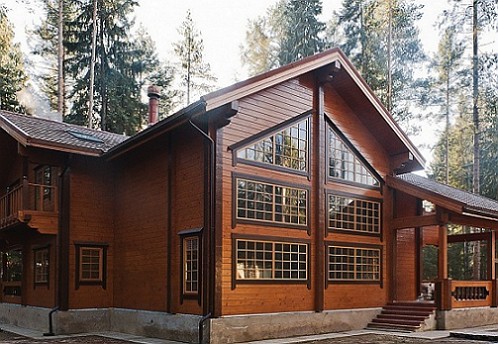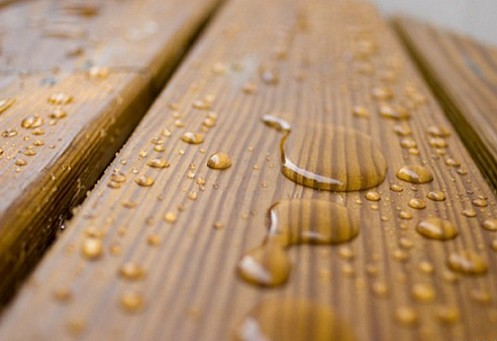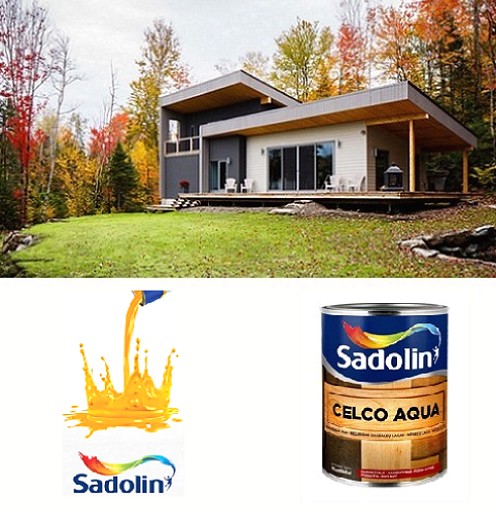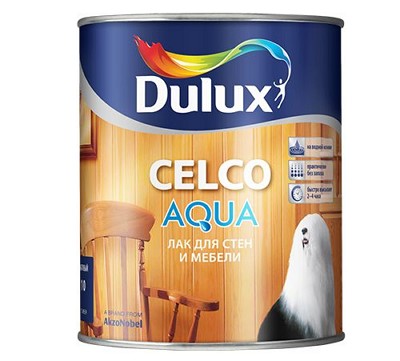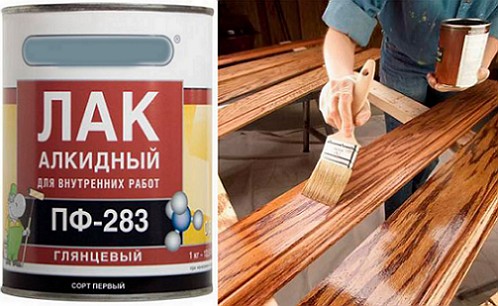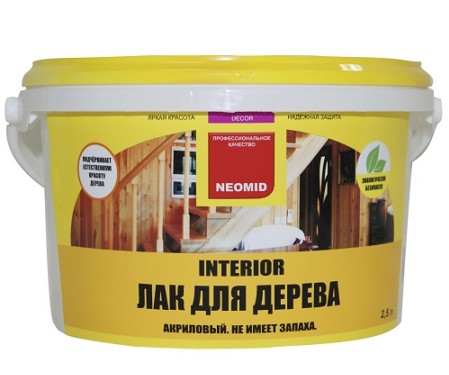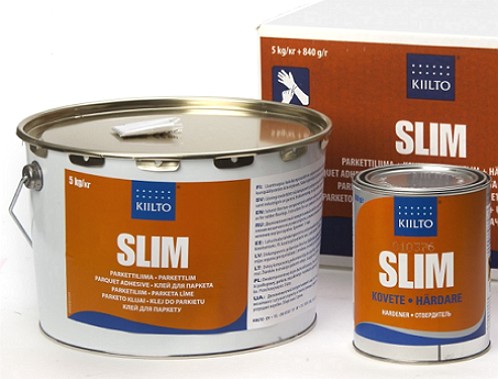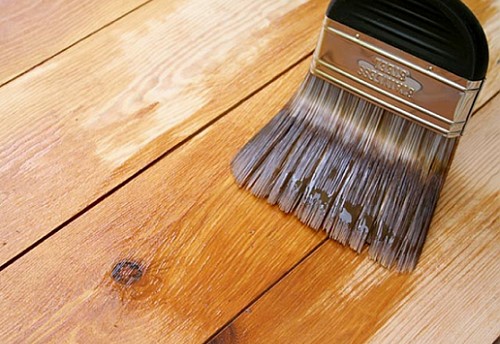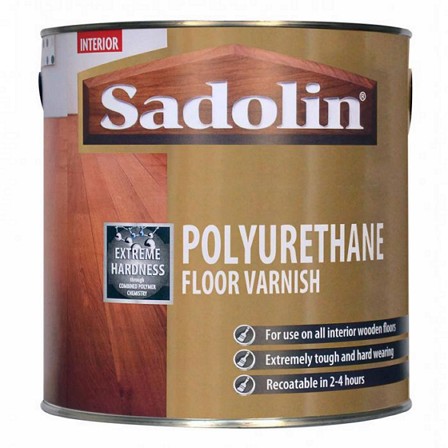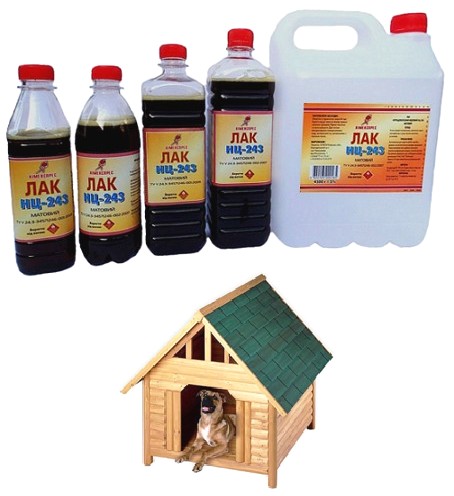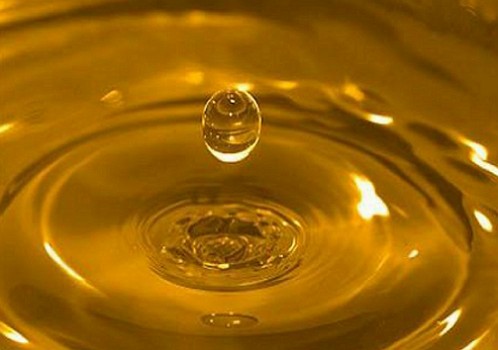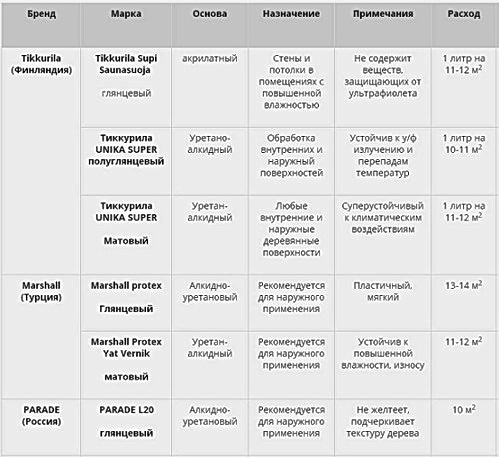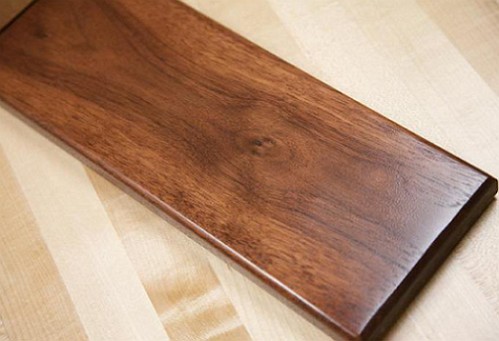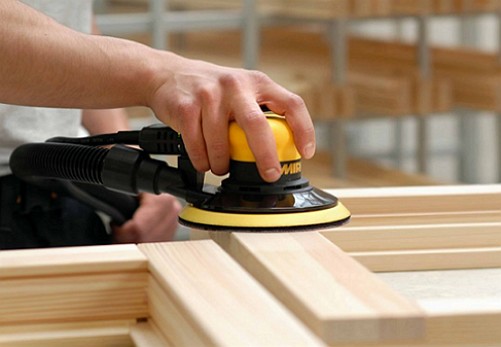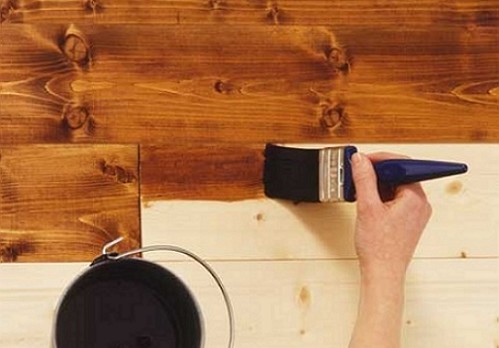Choosing a varnish designed for woodwork, we naively focus on its rapid drying after application, without paying attention to the chemical basis of the material. But in order for the varnished surface to acquire the desired protective properties and gloss, it is necessary to study the composition of the varnish. Choose a varnish is necessary. How to do it? As always, our experts are rushing to the rescue.
Content
The need for a protective coating
Upon completion of work with wooden products and structural elements, a protective coating is proposed. To create a protective coating, use wood varnish for outdoor work.
This choice is due to the excellent performance characteristics of lacquers: water-repellent properties and resistance to any mechanical abrasion. This applies to the surfaces of wood, which are subject to increased requirements for abrasion and wear resistance. In addition, wood varnish coating provides the surface resistance to weathering, direct sunlight and frost resistance.
The varnished surface can change the modest color and the inexpressive structure of the wooden element beyond recognition. The main thing is to skillfully pick up the varnish, and then the work with varnish wood will show an excellent end result of creating a lasting coating. By what criteria and parameters should you choose a varnish for application from the outside?
Basis of lacquer bases
When choosing a varnish, it is necessary to take into account the structure of the wood, its density and the expected peak of the surface load during its operation. The most popular types of varnish for exterior work are alkyd, acrylic varnishes and water-based varnishes because of their ecological compatibility and safety of use.
Let's show that the main criterion for choosing a varnish is its basis: organic, oily or water.
organic base of varnish
The basis of organosoluble varnishes are:
• alkyd resins
• nitrocellulose
• acrylic and acrylate (dispersion)
• epoxy resin and hardener
• urethane and polyurethane oils.
Alkyd varnishes represent a complex solution of melamine-formaldehyde resins in synthetic solvents. Features of resins: lightfastness, transparency, high water resistance, rapid solidification and shine during drying. For rapid solubility of resins in organic solvents, the resins are modified by the addition of additives. The density of alkyd varnishes is 1120-1180 kg / m3.
All organic soluble acrylic lacquers for outdoor work characterizes a long drying time (up to 72 hours) and only a two-component mixture dries in 24 hours.
The advantage of using one-component lacquer is its complete readiness for operation.
Two-component varnish requires pre-mixing of components, namely a semi-finished varnish with hardener.
The hardener is a polyester polymer that is fast and easy to cure and mold.
All varnishes of organic have a sharp poisonous smell during application and drying.
But, after the preparation of the solution, a strong and elastic protective film of the facade varnish on the panels, doors, steps and terraces of the private house will be guaranteed.
Polyurethane varnish refer to a professional series of varnishes. With the use of special equipment, polyurethane varnish is applied to dark and light wood species. In this case, a stable uniform coating is formed, decorating and protecting the outer beams, columns and window openings.
In addition, polyurethane varnish for outdoor use is used for wood processing during restoration and decoration.
The cheapest, but no less popular, is a nitrocellulose matt varnish that dries for 30 minutes and does not require special applicators. But the unsatisfactory resistance to active influence of aggressive moisture detracts from all the previous achievements of NC lacquers, so the refusal to cover expensive types of wood is justified.
base of oil varnishes
The basis of oil varnishes are resins (natural or synthetic), vegetable oils and solvents. Oil varnishes are the safest and environmentally friendly. The film formed during the application well resists abrasion and is even better wetted.
Compared with organic varnishes, oil varnishes are less weather resistant and the drying process is associated with the moisture content of the wood. Oil varnishes contain up to 65-80% of oil, which creates an additional electrical insulation property of the protective layer.
After coating the wood with oil varnish, additional polishing is required. Drying of oil varnishes lasts up to two days.
Indicative in terms of universality and practicality yacht lacquer for outdoor work on wood. According to the common opinion of specialists and the rating of paint and varnish materials, this is the best varnish for outdoor woodwork.
Yacht varnishes are a quality and durable protection of external wooden surfaces.
Let's say that the reliability limit is higher than for all other varnishes intended for this type of paint and varnish measures, allowing the yacht lacquer to remain afloat.
aqueous base of lacquer
The basis of water-soluble aqueous varnish for outdoor works is the dispersion of acrylate, which forms an indelible dry residue upon drying, which we see as a varnish coating. Such residue is harmless to humans, fireproof and non-flammable.
Poisonous odor, cutting eyes when applying a varnish is missing, the varnish preserves the structure of the wood and can be tinted in the desired color. The drying time of the paintwork is negligible (up to 12 hours) and depends on the humidity of the environment.
It is noted that the most economical option is acrylic and polyurethane varnishes, which reduce the rate of fading and cracking of wood. Less economical are alkyd and acrylic lacquers.
Available information about the varnishes is here.
Surface preparation and application of varnish
Recall that, regardless of the choice of varnish for exterior work, an indispensable condition for the creation of a solid and protected surface is its careful preparation and proper application of lacquer. Any varnish involves the creation of a multi-layer surface, so it is thoughtfully prepared.
Manufacturers of paint and varnish products recommend applying several layers of varnish, namely from 2 to 4, creating a smooth glossy surface. The average consumption declared by the manufacturer can be considered conditional, calculated for ideal conditions of application of operation. However, the "average hospital" indicator does not always correspond to reality, therefore, it is necessary to take into account the roughness and density of the wooden surface.



